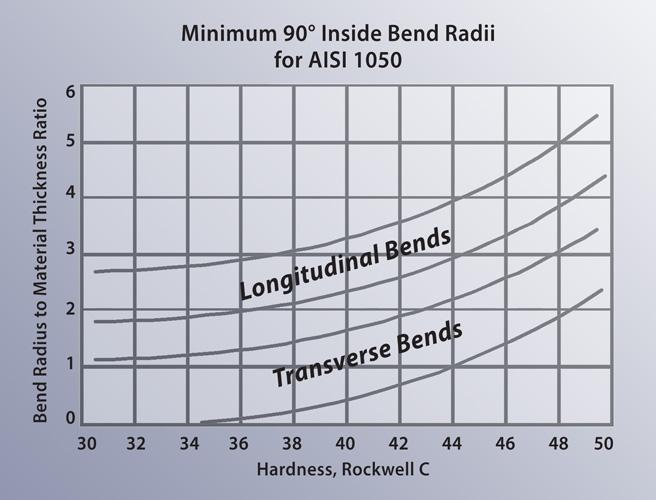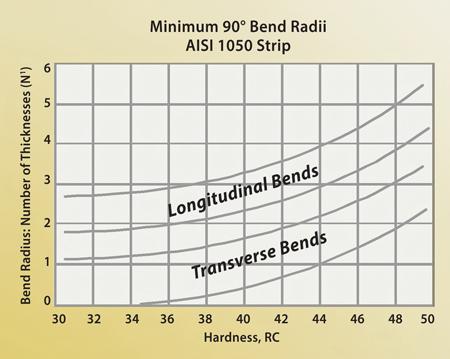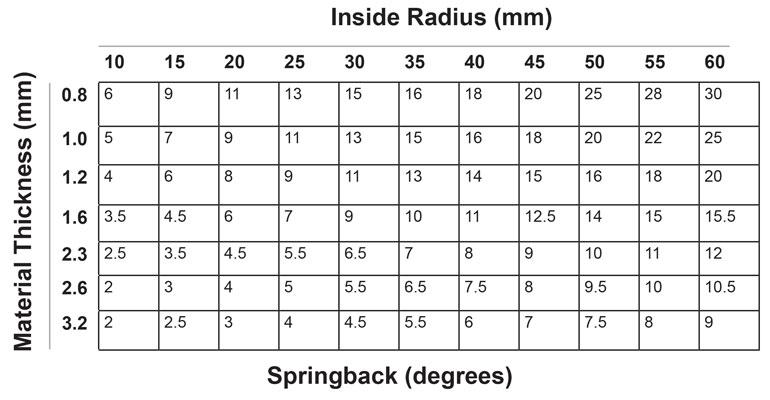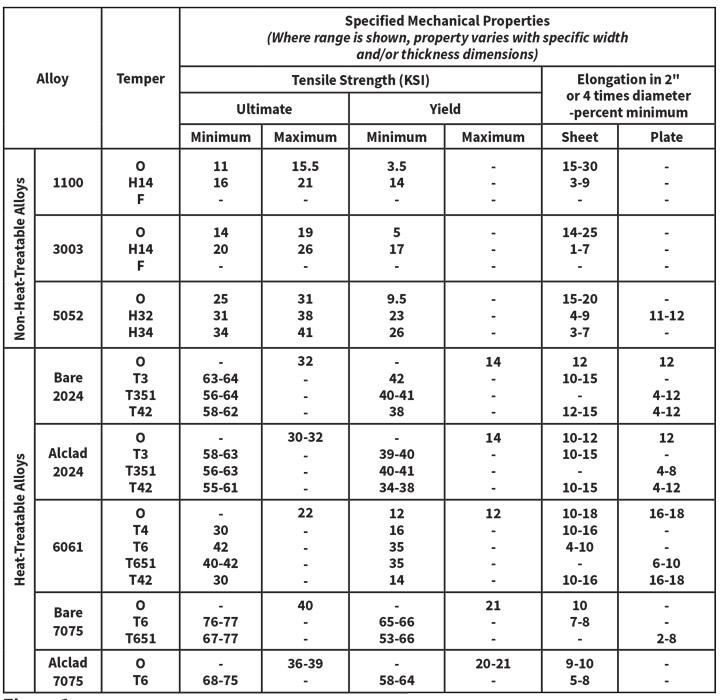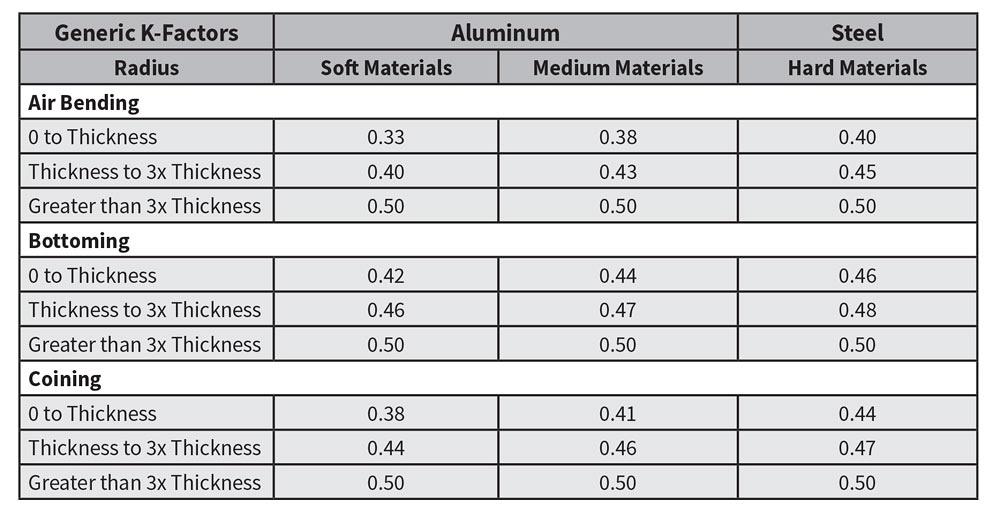In general parts should be designed with a minimum 1t bend radius radius matching the sheet thickness for the simplest setup and to ensure we can form the intended geometry.
Bending aluminum sheet minimum radius.
In general mild steel and type 304 stainless sheet can be formed with sharp bends 1t without concern up to 1 8.
Still if you want to avoid cracking abide by the minimum bend radius in 0 25 in thick 6061 t6 which is quite large see figure 3 and avoid bending acute angles.
Aluminum minimum bend radii for 90 degree cold forming of sheet and plate.
We recommend 5052 h32 for aluminum chassis projects.
Discover all our calculation tools in the calculators section of the top menu.
The tool can calculate the required bending force for bending aluminum stainless steel mild steel and weldox or strenx high strength steels.
4 0 5 2.
Per the aluminum association inc.
The minimum bend radius for aluminum when working with aluminum over sheet metal several variables need to be considered.
Preferred recommended 90 degree bend radii for various sheet metals.
Radii for various thicknesses expressed in terms of thickness t.
Use this document to choose values that are both manufacturable and meet your needs.
Say you get a print that says you need to bend a part to an external angle of 100 degrees that s an internal angle of just 80 degrees.
The bend radii listed are standard minimum if manufacturing for aircraft and aerospace applications.
Now multiply that answer by the plate thickness.
If i am looking at properties for a36 steel i see elongation properties between 18 and 21 percent.
Where necessary 5052 h32 may be bent to 1t and 6061 t6 to 1 1 2t.
The tables below show bend radii and minimum bend sizes for materials and tooling combinations stocked by protocase.
Bend radii minimum bend sizes.
So in this case the minimum inside bend radius is 2 times the material thickness.
Since commercial sheet metal bending can be done with less concern for stresses caused during forming operation the radius can be near zero for thin sheet metal.
Aluminum is typically thicker and stronger and requires more force to bend as well as consideration of edge conditions and punch nose radii.
If the material is 0 5 inch thick.
Steel american iron and steel institute 1 see aisi s fabrication guidlines for cold bending.
We go beyond the general rules of sheet metal bending as our customers want tight bend radii for sheet metal parts.



